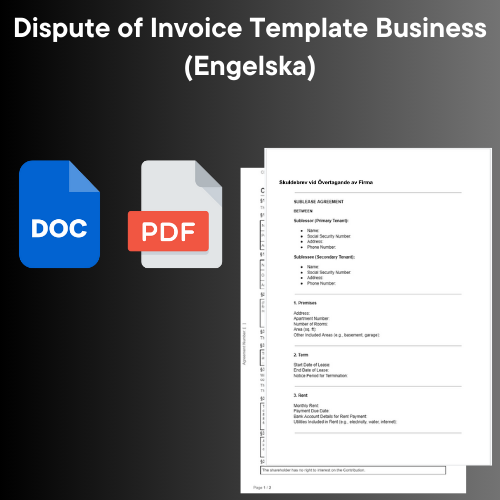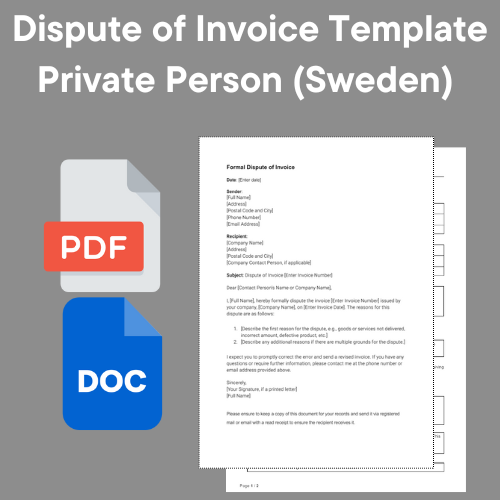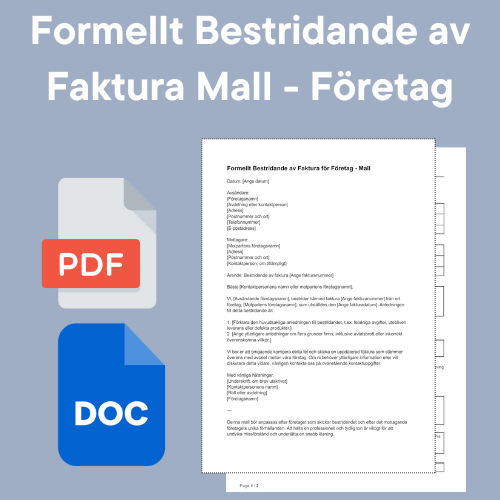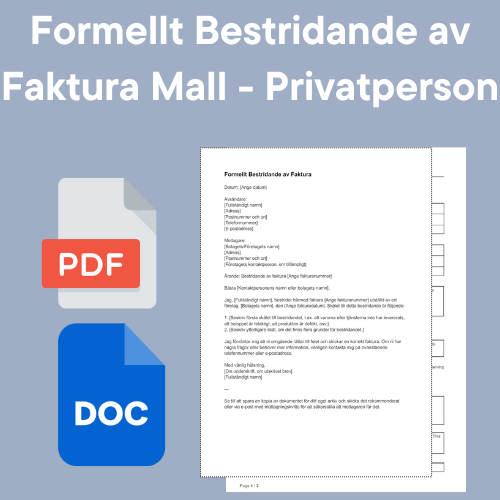Manage disputed invoices, debt collection claims and bailiffs
Share
Manage Disputed Invoices, Debt Collection Claims and Bailiffs
Table of Contents
- 1. Dispute of invoice
- 2. Debt collection requirements
- 3. Handling by the Bailiff
- 4. Request a correction from the Bailiff
- Laws and regulations
- Practice and examples
- Tips for avoiding payment notices
1. Dispute of invoice
When you receive an invoice that you believe is incorrect, the first step is to dispute it. You should contact the company in writing and state why you believe the invoice is incorrect. It is important to include the invoice number, date and the amount to which the invoice refers. Also state clearly the reasons why you do not accept the invoice.
2. Debt collection requirements
If the company does not correct the error and forwards the case to a debt collection agency, you must also dispute this claim. The dispute must be sent in writing, preferably by e-mail in order to receive a confirmation of receipt. Here it is important to attach previous correspondence and state that you have already disputed the invoice.
3. Handling by the Bailiff
If the debt collection company does not accept your dispute and sends the case to the Bailiff, the process continues there. The bailiff will then send a payment order that you must contest in writing. Again, provide all relevant information and attach evidence as to why you believe the claim is incorrect. If you dispute the claim in time, the case is closed with the Crown Enforcement Officer and can then proceed to court if the company chooses to continue pursuing the case.
4. Request a correction from the Bailiff
If the Kronofogden has already made a decision (ruling) and you believe that it is incorrect, you can request a reconsideration, known as recovery. This means that you go to court to have the case tried again. It is important that you apply for recovery within three weeks of receiving the result.
Laws and regulations
The following laws are relevant in these contexts:
- The Act on payment orders and handouts (BfL) regulates the procedure at the Kronofogden.
- The Debt Collection Act (1974:182) specifies how debt collection companies may act when collecting debts.
- The Consumer Purchase Act (1990:932) and the Consumer Services Act (1985:716) provide protection for consumers against incorrect claims.
Practice and examples
In practice, there are several cases where consumers have successfully disputed incorrect invoices and debt collection claims. An important example is that if a consumer can demonstrate that an agreement has not been fulfilled correctly or that the product/service deviates from what has been agreed, the claim can be invalidated.
Tips for avoiding payment notices
- Always dispute the invoice and collection claims in writing and on time.
- If the company goes on to the Swedish Enforcement Agency, notify the Swedish Enforcement Agency that you dispute the claim.
- To avoid payment notices, follow all steps carefully and keep track of the deadlines.
By carefully following these steps, you can effectively manage and dispute wrongful claims and protect your rights. For more detailed information and specific advice, you can visit the Swedish Consumer Agency's website or the Kronofogden's official website .




